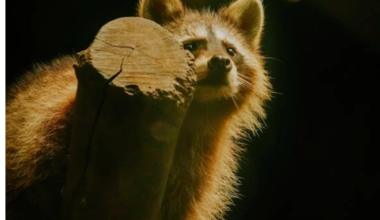Curious about creating an enchanting dragonfly haven in your garden? Unveil the secret: Discover how specific dragonfly attracting plants can add both beauty and utility to your outdoor oasis. These graceful creatures are drawn by more than just aesthetics – it’s also about the perfect location!
Imagine this – a warm summer afternoon in your blooming garden, a cup of tea in hand as you watch delicate wings shimmering in flight. That is precisely what awaits at the end of this exciting journey we’re embarking on together.

So why not join me? Make yourself comfortable because by the time we reach the end; you’ll be equally fluent in dragonfly-ese too! Let’s dive headfirst into Mother Nature’s design book and learn how simple it can be to welcome those glittery wonders into your own backyard Eden with these 12 dragonfly attracting plants.
Identification of Dragonfly-Attracting Plants
When it comes to attracting dragonflies, certain plants have proven themselves time and again.
By incorporating these specific plant species into your garden, you’re creating an inviting habitat that is sure to entice these beautiful insects. But what are those plants exactly?
1. Water Iris (Iris pseudacorus)
Water Irises not only add a splash of color to your water garden but also provide dragonflies with perching spots near water bodies. Their broad leaves and vibrant blooms create a picturesque backdrop while attracting dragonflies seeking shelter.
2. Pickerelweed (Pontederia cordata)
This aquatic perennial boasts spikes of beautiful blue-violet flowers that rise above the water’s surface. Pickerelweed serves as a landing platform for dragonflies and provides essential protection for their larvae.
3. Cattails (Typha spp.)
Cattails are renowned for their striking vertical growth and brown, cylindrical seed heads. Dragonflies love to rest on their sturdy stems, while the water surrounding them serves as an ideal environment for their nymphs.
4. Blue Flag Iris (Iris versicolor)
With its stunning blue-purple flowers and sword-like foliage, the Blue Flag Iris is a favorite among dragonflies. This plant’s blossoms provide a nectar source, and its leaves offer ideal egg-laying spots.
5. Meadow Sage (Salvia spp.)
Meadow Sage, with its vibrant hues and aromatic leaves, is not only a delight to humans but also a magnet for dragonflies. The intricate tubular flowers make it easy for these insects to feed on nectar.
6. Joe Pye Weed (Eutrochium spp.)
This towering perennial showcases clusters of mauve or pink flowers that bloom in late summer. Its height and structure make it an excellent perching spot for dragonflies, allowing them to scan their surroundings for prey.
7. Swamp Milkweed (Asclepias incarnata)
Attract both dragonflies and monarch butterflies by planting Swamp Milkweed. Its pink blossoms provide nectar, and its leaves are a host plant for monarch caterpillars, creating a vibrant ecosystem.
8. Lizard’s Tail (Saururus cernuus)
Named for its unique tail-like flower spikes, Lizard’s Tail thrives in wetland areas. This plant offers dragonflies suitable perches and sheltered spaces for laying eggs.
9. Blazing Star (Liatris spp.)
The vibrant, spiky blooms of Blazing Star are irresistible to dragonflies, offering them a bounty of nectar. These flowers create a vertical element in your garden, making it easier for dragonflies to spot potential prey.
10. Cardinal Flower (Lobelia cardinalis)
Captivating with its slender stems and vibrant red blooms, the cardinal flower stands as a prime example of dragonfly attracting plants. Its tubular flowers not only add a touch of elegance but also serve as a convenient feeding station for these mesmerizing insects.
11. Bee Balm (Monarda spp.)
Bee Balm’s colorful and fragrant flowers beckon dragonflies while also attracting other pollinators. This plant’s whorls of blossoms offer ample landing pads for these insects.
12. Golden Club (Orontium aquaticum)
Golden Club is a unique aquatic plant with yellow flower spikes that emerge from the water. Dragonflies are drawn to its distinctive appearance, and its submerged leaves provide shelter for their nymphs.

Placement and Management of Water Bodies for Supporting Dragonflies
Now that we’ve covered some of the essential varieties of dragonfly attracting plants, let’s dive into another critical aspect – the placement and management of water bodies within your garden landscape.
Finding The Perfect Spot
When deciding on the location for your water feature, aim for an area with partial shade rather than full sun exposure. This will ensure that dragonflies have both access to water as well as areas where they can bask in warmth without getting overheated.
Size Really Does Matter!
Bigger isn’t always better, but when it comes to designing a dragonfly-friendly water body, size does play a crucial role.
A pond or pool that is at least 5 feet deep and covers an area of about 100-200 square feet will provide ample space for these spectacular insects to thrive.
Considerations in Maintaining Optimal Plant Conditions for Attracting Dragonflies
Creating an inviting environment for dragonflies goes beyond just planting the right species. It also involves maintaining optimal conditions so that they feel welcomed and encouraged to call your garden their home.
Be Mindful of Moisture Levels
Dragonfly-attracting plants thrive in moist soil, so make sure you keep the ground adequately hydrated without overwatering. Striking that delicate balance will not only keep your plants happy but will also serve as a beacon calling out to dragonflies far and wide.
Embrace Diversity
Just like humans appreciate diversity, dragonflies are no different! By including a variety of plant species in your garden, you’re providing a buffet of options that cater to the varying tastes and preferences of these enchanting creatures.
Effectiveness of Native vs. Non-Native Plants in Luring Dragonflies
When it comes to attracting dragonflies, should you stick with native plant species or venture into the realm of non-native varieties? Let’s explore this intriguing question further.
Native Flora: Home Sweet Home
Native plants have evolved alongside local ecosystems for thousands of years – making them natural hosts for indigenous wildlife, including our beloved dragonflies.
By incorporating native flora into your garden design, you’re essentially creating a welcoming atmosphere reminiscent of their ancestral homes.
Non-Native Intrigue: Exploring New Possibilities
While native plants hold undeniable charm when it comes to attracting dragonflies, don’t discount the allure of non-native options.
These plants can introduce a fresh burst of color and novelty to your garden, enticing dragonflies with their vibrant hues and exotic scents.
Significance and Effects of Seasonal Changes on Plant-Dragonfly Interaction.
As each season brings its own unique palette of colors and climatic conditions, it’s important to understand how these changes affect the interaction between plants and dragonflies – ensuring your garden remains a magnet for these lovely insects throughout the year.
Spring Awakening: A Welcome Call
As winter gives way to spring, new life bursts forth from every corner. This seasonal awakening provides an irresistible invitation for migrating dragonfly populations returning home after their long journeys.
Summer Heatwaves: A Desert Oasis
Amidst scorching heat waves, your garden can become an oasis teeming with life thanks to strategically positioned water bodies and shade-providing plants. Dragonflies will flock to your garden, seeking refuge from the blistering temperatures and quenching their thirst in the process.
Autumn’s Bounty: A Farewell Feast
As summer fades into autumn, your garden undergoes a transformation as foliage turns vibrant shades of red, orange, and gold. This visual spectacle acts like a farewell feast for dragonflies, providing one last banquet before they retreat to warmer climates or enter hibernation.

Conclusion
By incorporating these twelve dragonfly attracting plants into your garden and following our tips for creating an inviting habitat, you’ll transform your outdoor space into a haven buzzing with winged wonders.
So get ready to witness the mesmerizing flight patterns and vibrant colors of dragonflies as they grace your garden with their ethereal presence!
FAQs On Dragonfly Attracting Plants
Q: What are some dragonfly attracting plants?
A: Some dragonfly attracting plants include lilies, yarrow, sage, meadow sage, joe pye weed, and milkweed.
Q: Can these plants also attract butterflies?
A: Absolutely! Many of the plants that attract dragonflies also attract butterflies and other pollinators.
Q: Are these plants easy to grow in a garden?
A: Yes, these plants are generally easy to grow and require low maintenance.
Q: Do dragonflies lay their eggs in water?
A: Yes, dragonflies lay their eggs in or near water, so having aquatic plants in your garden can provide a place for them to lay their eggs.
Q: Can I attract dragonflies even if I don’t have a pond?
A: Yes, you can still attract dragonflies by planting a variety of these plants in sunny areas of your garden.
Q: Do dragonflies help with mosquito control?
A: Yes, dragonflies love to eat mosquitoes and their larvae, so attracting dragonflies to your garden can help keep mosquito populations in check.
Q: Do these plants come in a variety of colors?
A: Yes, many of these plants come in a variety of colors, including purple flowers, white flowers, and flowerheads of various hues.
Q: Can I attract dragonflies even if I don’t have a large garden?
A: Absolutely! Dragonflies can be attracted to gardens of all sizes, from small urban spaces to sprawling landscapes.
Q: Can I attract dragonflies without sacrificing the beauty of my garden?
A: Not at all! In fact, dragonflies can add an enchanting and whimsical touch to any garden.
Q: How can I create a habitat for dragonflies in my garden?
A: To create a habitat for dragonflies, you can incorporate tall plants, provide a place for them to perch, and include aquatic plants that grow in or near water.

